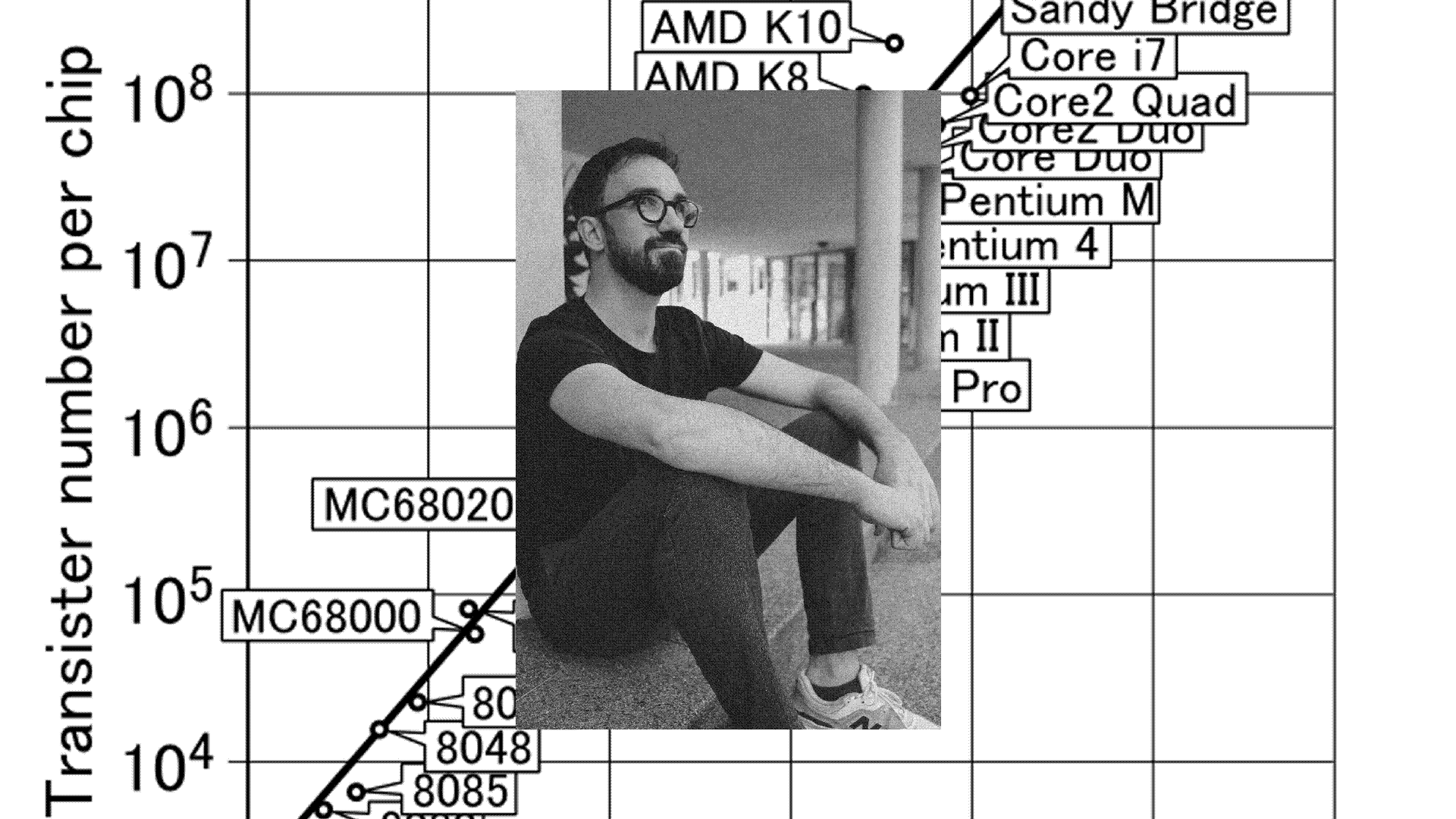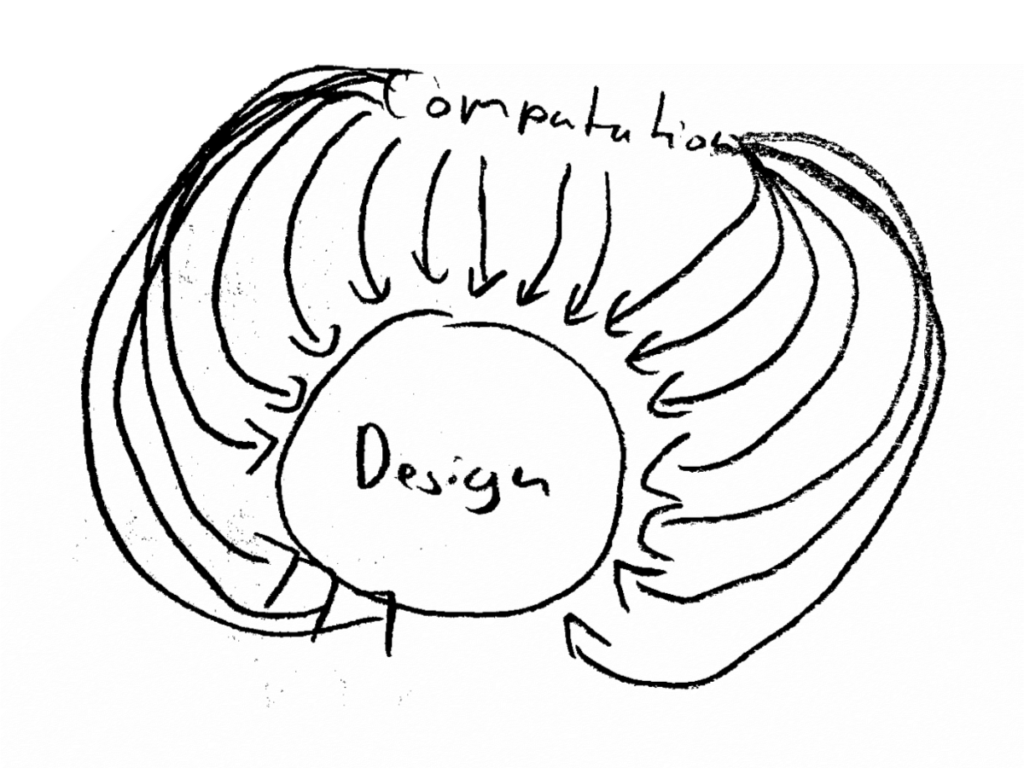INTERVIEW
Tim Rodenbröker

Tim Rodenbröker works in the intersection of communication and technology. He sees code as an essential building-block in contemporary design-education. Over the course of the last years he has developed a wide range of commercial and self-commissioned projects that prove potential of creative coding in the realms of communication design.
Tim, you are internationally renowned for teaching processing to designers. How did you learn processing, design, using processing for design, and on top of all, teaching processing to designers?
Martin, that’s a very nicely posed question! Well, first of all, I would like to emphasize that I teach Creative Coding. My goal is not to teach my students the Processing programming language, but to give them an introduction to the world of creative work with code using this language that was developed specifically for creative work. For myself, the journey into this world began with an observation: In the short time I’ve lived on this earth, computers have explosively spread to the far corners of our working and living environments: In the 1990s, the first clunky desktop PCs found their way into offices and private rooms; today, just a few years later, machines are learning to paint like Picasso, drive cars or checkmate the world chess champion. It’s both fascinating and disturbing at the same time. I’m interested in how we can reflect on and process this culturally and creatively. As a graphic designer, so-called technological progress has always left me in a state of incredulous surprise. I am pursuing the goal of developing a basic teaching for graphic design that uncompromisingly acknowledges and questions the influence of the computer on the practice of design. For me, Creative Coding is a school of thought that can create perspectives both professionally, more importantly, culturally, and practically in life.

Why do you focus on community-based education?
I got to know many different universities in Europe as a student and teacher and was frustrated to discover early on that the systems are usually very inflexible and lag far behind digitally. This also had an impact on the subject I teach: Creative Coding was mostly just an optional side note in the curriculum. The Corona crisis threw the global education landscape into a state of shock: Suddenly, academies for creative professions, which are based on exchange and direct communication, were faced with a completely unexpected challenge: They were forced to digitize their entire offering within a very short time. This made two things clear to me: first, that you can’t just compress the familiar on-site learning experience down to a zoom window, and second, that learning in physical presence may be just one mode or element among many in a hybrid learning experience. I recognized this as an opportunity. Today, I’m developing an experimental, global, diverse community interested in creative work with technology.
I asked this question because institution-based education, in contrast to community-based education, ends up in official degrees, which many think are necessary to become a designer. Community-based education is often seen as of less value, partly because it does not offer any official recognition. Do you share this assessment?
Well, you can look at that from different perspectives. I think this is where the question of how important you think a bachelor’s or master’s degree is comes into play. I myself think such degrees are very important and meaningful, but I also don’t think that community based design education can or wants to replace higher education at all. I see it as something completely different, as something like a club of people who share a passion and want to exchange ideas about it. Who support each other and are at eye level. Of course, it’s a perfect complement to studying.
I have also met people who have become very successful without studying at all, simply by proactively implementing their own ideas. As you can see, the work here is not quite so simple. The fact that communities cannot hand out official degrees can be seen as a handicap. But it can also be seen as a liberation from a very narrow system that is often extremely inflexible and rigid.
Why do your clients hire you?
Most of my customers I currently win over Instagram. I have a really difficult relationship with this platform and frankly, if it wasn’t the place where creatives gather on the web, I would have left the platform long ago. I’ve been using Instagram as a sketchbook for a few years now. Again and again, agencies and brands approach me and ask if we can realize a project based on a certain idea in my feed. In recent years, for example, I’ve been able to work with IBM, the New York Times, and the British synthesizer manufacturer Slate+Ash. The projects are usually great fun, go quite quickly and are efficient because they are based on an existing idea. That’s how I regularly get to know exciting people, which I really enjoy.

One of my current goals is to basically do and implement projects like this in the future with standout community members. This creates a WinWInWIn situation for all three parties involved. I recently completed a first project in this form with Lena Weber, which involved a KeyVisual for a product from the Bristol-based music software manufacturer Slate+Ash. I’m very proud of the project.
That’s interesting! The kind of job offers we, TPN, get through social media is not great. Potential clients do not give us the freedom to develop something new but ask us to imitate something old they have seen on our feed and the budget is always tight.
Yes, I can understand that very well. For you, as a design studio with a very conceptual approach, such quick jobs are perhaps less interesting. For me and my community, however, they are, because they have the mentioned lean structure and are easy to calculate. I also have no problem if they are based on an existing concept. After all, my work consists of proactively developing such experimental ideas and then offering them as a starting point.
You gave me a beautiful quote for the back cover of Flexible Visual Systems, calling it the missing bridge between classic design and coded design. Could you elaborate on why and how the book can be that bridge?
Of course, I’d love to! You’ve developed a wonderful book that proposes an easy-to-understand method and terminology to go with it that I think has the potential to spark big changes in graphic design. Understanding systems as the basis for design is an idea that fits perfectly into a time when old norms and formats are becoming fluid and when time and space suddenly have to be included in the conception. You often talk about flexible visual identities: Today, these identities have to be designed for two-dimensional displays of any size, as well as for virtual spaces. Starting out in InDesign on a DIN format is no longer appropriate. Graphic design is an open space that enters into an osmotic connection with all peripheral areas. Putting system design at the center as a method here makes sense because it works independently of the medium. Apart from that, system theory is a foundation that is highly relevant far beyond design and has already triggered paradigm shifts in many areas.
Code is a language that can be used to describe and construct systems. Before the development of Processing, however, it was extremely time-consuming and required a lot of expertise to construct systems with programming. Processing has made this significantly easier and in the last 15 years, it has finally become understood in Europe. However, there was still a big problem: design and programming were interpreted as two completely different, almost opposite disciplines, which per se cannot understand each other. I myself worked as a web developer for a few years after my design studies and experienced how difficult communication between design and technology can be. With solutions like the FVS method and its terminology, these two fields can get very close and merge. This leads not only to better project progress but above all to completely new forms of expression.
For a couple of years, we have been in a frequent exchange of ideas about all sorts of things. It has been and still is very interesting for me to compare our different approaches, you coming from computational thinking and me from systems thinking. Where do you see the similarities and differences?
I have come to view Computational Thinking relatively critically, especially since I dealt with the topic intensively in my master’s thesis. CT teaches many valuable methods and principles, but mainly on a logical-rational level. At the beginning of the interview I already mentioned that I am mainly interested in the cultural aspects and consequences of the extraterrestrial life form of the computer. Computational Thinking is for me something like a bridge, which in the end brought me to systems thinking or network thinking in the sense of James Bridle. For me, systems thinking means looking at things in relation to each other. In this context, the unmanageable complexity is a supposed hurdle that we could overcome by admitting the limits of our own thinking.

Where do you see yourself in 10 years?
In 10 years I would still like to be doing exactly what I am doing right now: meeting great people, doing research, experimenting and thinking about the world, doing my own creative work, teaching people something that I think is really valuable and bringing them together. That makes me very happy!
Thank you so much for this talk, Tim! I am really looking forward to continuing to explore how our teachings can benefit from each other.
Dear reader, if you haven’t already done so, head over to https://timrodenbroeker.de/ and have a look at his brilliant courses.